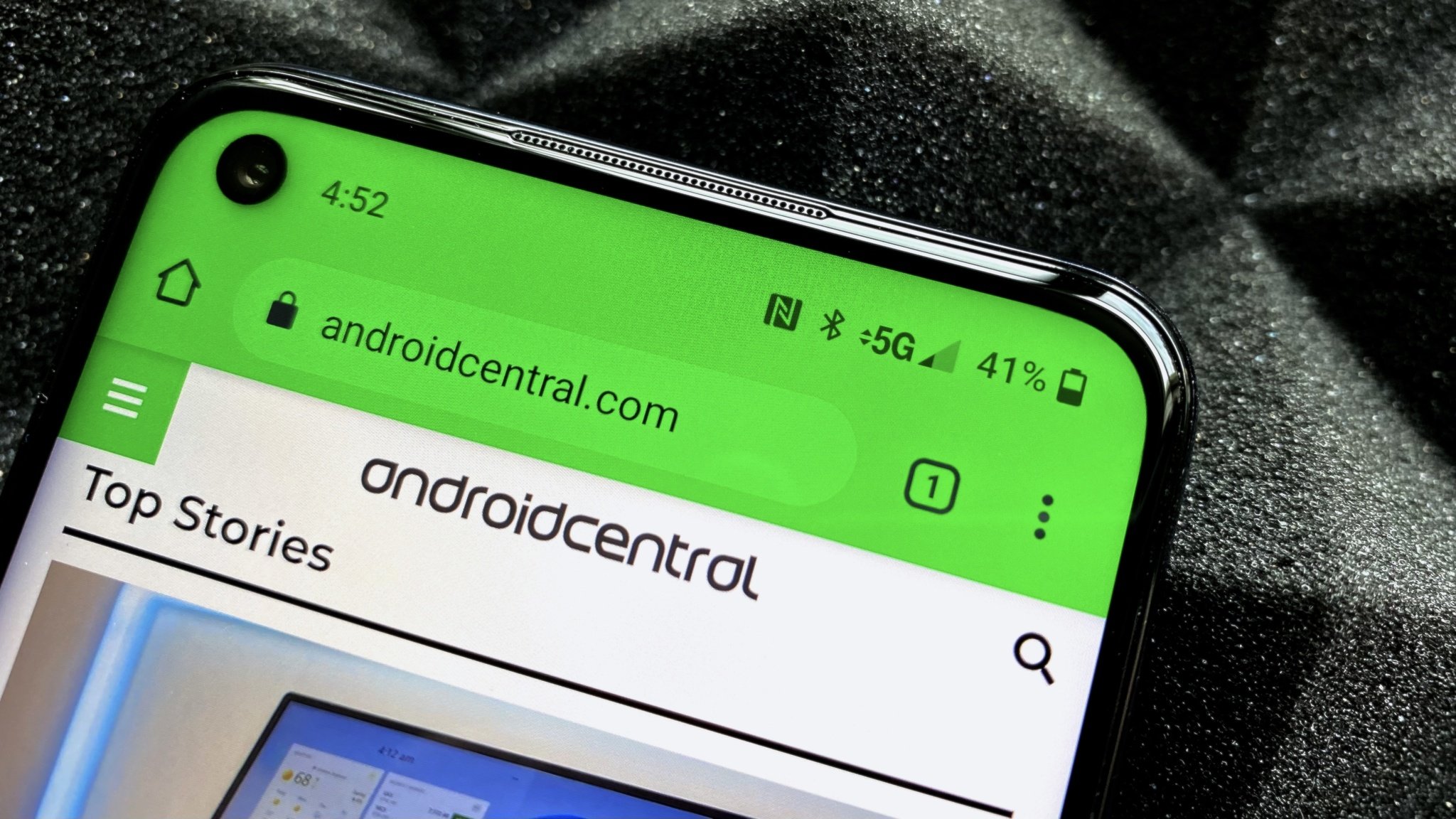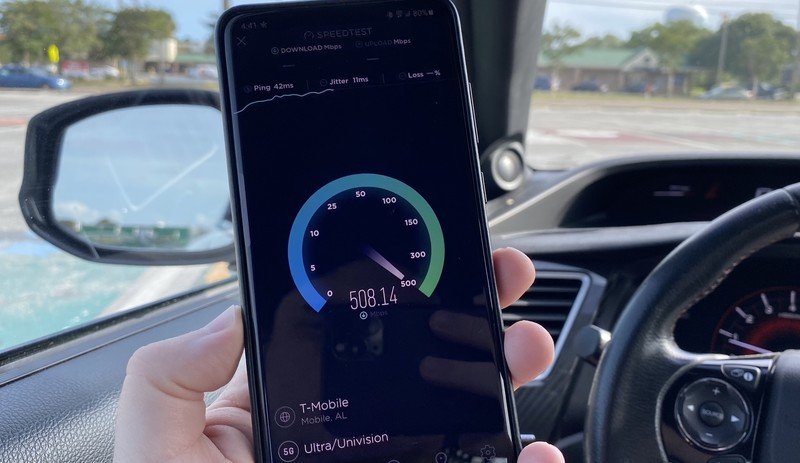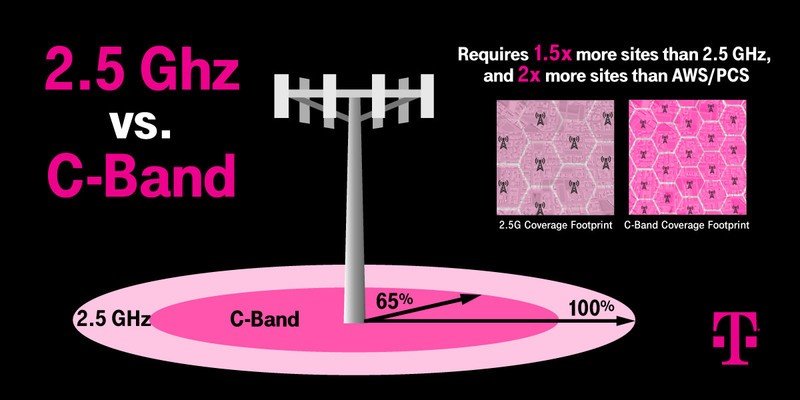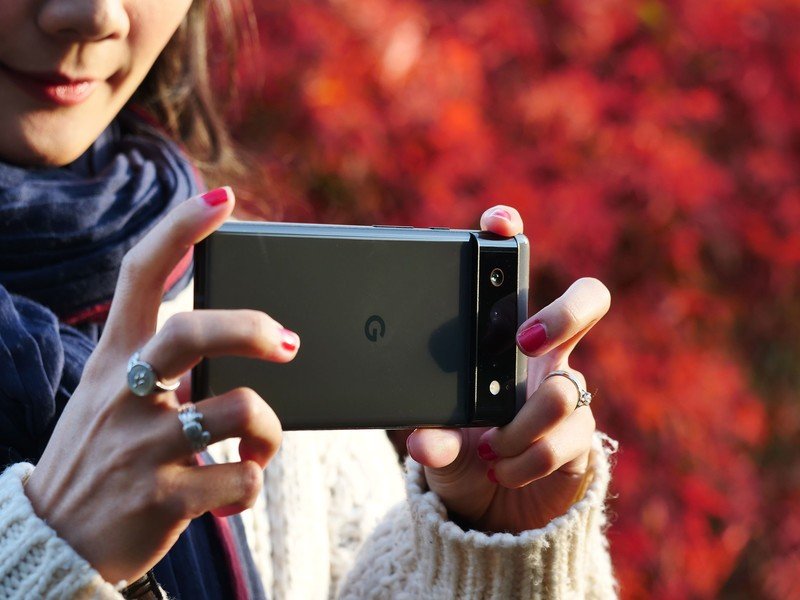C-Band and mid-band 5G: What it is, and why it's important for your next phone

A lot of people have trouble understanding exactly what 5G is. Things get even more complicated when you consider its many forms and bands. Carriers all started out with the flashiest and fastest 5G with mmWave in a few select areas, but it wasn't until Sprint showed off its mid-band 5G in mid-2019 that it became clear that 5G could realistically cover a city while offering vastly improved speeds over LTE.
T-Mobile has taken over Sprint's 5G spectrum and has used it to add speed and capacity to its relatively slow low-band 5G network. This has allowed T-Mobile an early lead in 5G coverage. More than 200 million people are now covered by T-Mobile's mid-band 5G, giving the carrier a serious lead in 5G. But AT&T and Verizon started to ramp up deployment of their own mid-band 5G networks with C-band in early 2021.
What is mid-band and C-band spectrum?

To keep a long story short, lower frequencies travel further, allowing carriers to provide coverage with fewer towers. This spectrum starts as low as 600MHz but isn't available in very large chunks, meaning that speeds are more in line with LTE speeds. Mid-band spectrum requires many more towers to provide coverage, which means deployment will take longer as more equipment must be set up and more land usage rights must be acquired.
T-Mobile's Sprint-based mid-band uses 2.5GHz spectrum, lower than the 3.7GHz to 3.9GHz the carriers got from the C-band auction; but it shows just how valuable this spectrum will be to 5G going forward. While C-band will require more towers than T-Mobile's current mid-band spectrum, it should also come with better speeds and support for more users once it's deployed. It's also worth remembering that T-Mobile has also bought some large chunks of C-band spectrum to improve capacity in key areas that need it.
At the end of the day, each carrier paid billions of dollars for access to this spectrum, and the initial tests from publications like Tom's Guide have shown promising results. Speeds from this early test peaked over 1Gbps, with other results showing closer to 600Mbps.
While gigabit speeds are meaningless on a mobile phone, it's important to remember that once the service is formally launched, everyone in the area with a compatible phone will be sharing the connection, so the extra capacity will help keep speeds high.
Mid-band spectrum is important to carriers because it helps them deliver on the promise of 5G as a true next-generation network, but also so it can keep up as more and more people upgrade to 5G and start using the tech. All of this is also possible without reducing the capacity for LTE devices, which some people will continue to use for years.
Be an expert in 5 minutes
Get the latest news from Android Central, your trusted companion in the world of Android
Where doesn't mid-band work?
There are some obvious challenges to C-band deployment, starting with coverage. T-Mobile estimates that C-band will require about 1.5x as many towers as its 2.5GHz mid-band spectrum. While this is much less than the mmWave 5G networks being built by Verizon and AT&T, it still means that carriers won't simply be able to upgrade existing towers with C-band nodes.

While most people can agree with the overall benefits of a faster and more reliable 5G network, a lot of them still won't want to have a new pole installed near their home. While these fights often end in victory for the carrier, the extra time and money it can take to get rights to a piece of land will directly impact the speed of C-band deployment.
Another (potentially devastating) issue stems from the Federal Aviation Administration (FAA), thanks to concerns that C-band 5G can affect altimeters in certain planes. According to an article by USA Today, altimeters use frequencies between 4.2 and 4.4GHz. While C-band uses frequencies that don't overlap this at 3.7-3.98GHz, there is still concern that some models may still be confused by the signals. This could lead to planes being unable to safely land in areas where C-band is deployed and the weather has made it impossible for the pilot to see the runway.
AT&T and Verizon have already delayed their C-band networks to accommodate further investigations into the effects C-band would have. While it could be cleared completely or power limits may be imposed around airports, there's a good chance that the airline industry could cause further delays for C-band, even as carriers desperately want to get started on the network.
Should your next phone have C-band?

C-band will be included in most new flagship phones shipping in 2022 and is already included with many that shipped in 2021. The iPhone 12 and 13 models both support C-band 5G alongside some Android devices like the Samsung Galaxy S21 and Z Fold 3. Phones will likely need a software update to enable the new bands as well.
If you're an AT&T or Verizon user and you're excited to try out the improved speeds of 5G, you should make sure your next phone will support C-band. T-Mobile users won't see as much of an uplift in speeds compared to the current mid-band offering and it remains to be seen just how T-Mobile will build C-band. Still, with C-band support being so important to these carriers, it's a good bet that the best Android phones of the future will come with the tech.
When Samuel is not writing about networking or 5G at Android Central, he spends most of his time researching computer components and obsessing over what CPU goes into the ultimate Windows 98 computer. It's the Pentium 3.

